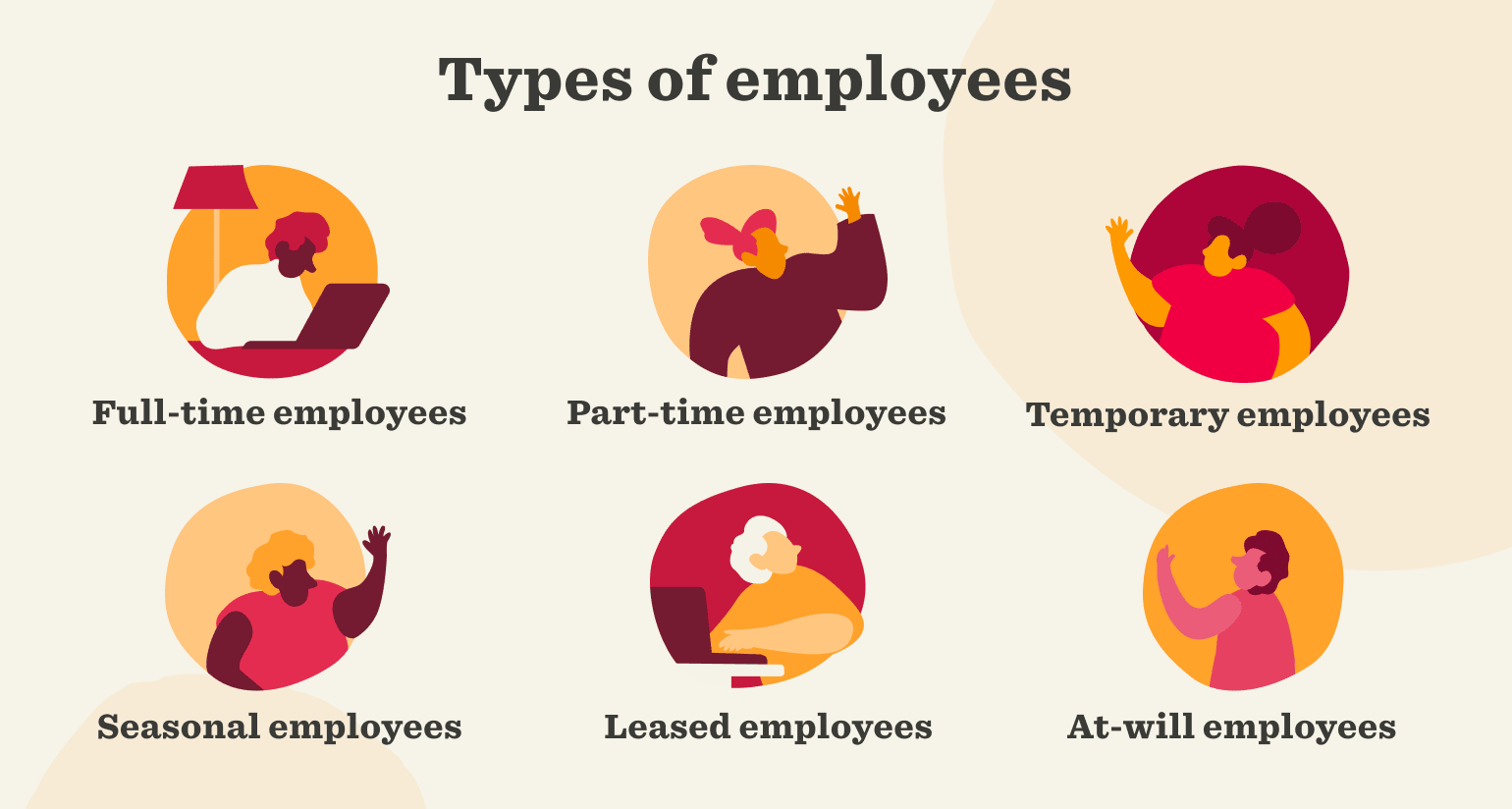“Employee type” refers to different kinds of employees an organization can hire.
Organizations must consider the legal obligations and regulations applied to each type of employee.
The different types of employees include:
- Full-time employees
- Part-time employees
- Temporary employees
- Seasonal employees
- Leased employees
- At-will employees
Note that the IRS defines an employee as an individual whose work can be controlled by the employer. Organizations must withhold and pay income taxes, social security taxes, Medicare taxes for employees, and unemployment tax on wages paid.
This is in contrast to an independent contractor, for whom the payer has the right to control only the result of the work and not how the job is done. Companies do not have to pay any of the taxes listed above for independent contractors.

Why should HR leaders care about employee types?
Employee type determines legal requirements that your organization must fulfill for its people. It’s important to understand each type of employee to ensure you comply with all laws for their management.
It’s also helpful to be aware of all employee types because some may be more appropriate for specific individuals and positions than others. By familiarizing yourself with every employee type, you’ll be able to make choices that best serve the organization for each new hire.
Key takeaways
- Employee types refer to the various classifications of team members that an organization can hire, each with distinct legal obligations and management requirements
- Understanding team member types helps HR professionals ensure compliance with labor laws and optimize workforce planning
- Selecting the right team member type for each role can enhance organizational effectiveness and align with strategic goals
- Knowing the differences between team members and independent contractors is crucial for proper tax and benefit management
What can HR leaders do to understand employee types properly?
Here’s a quick overview of basic information according to each employee type.
Recommended For Further Reading
Full-time employees
Full-time employees work an average of 40 hours a week and are eligible for benefits. Employers with 50 or more full-time employees must offer healthcare coverage to their full-time employees and dependents.
Part-time employees
Part-time employees work fewer than 40 hours a week and may not be eligible for benefits. They are often paid hourly rather than with a yearly salary.
Temporary employees
Companies hire temporary employees temporarily, usually for a set period of time or until a specific project is complete. Temporary employees are not typically eligible for benefits. Many companies hire temporary employees through temp agencies.
Seasonal employees
Seasonal employees are hired for seasonal needs, usually for peak times like summers or winter holidays. Because they are not considered permanent employees, seasonal employees are eligible for Social Security and unemployment benefits.
Leased employee
Staffing agencies hire leased employees and lease them out to other companies to complete specific jobs, usually for a year or longer. Leased employees receive benefits through their staffing agencies rather than the companies that lease them.
At-will employees
At-will employees can be dismissed at any time for any legal reason without warning and can quit a job or go on strike with no prior notice. Most American employees fall under this category.
Why should employee types be a part of the modern HR strategy?
Each position and person has its own unique needs. When hiring for a new role, it can be helpful to know the different employee types so you can be sure you’re hiring people under a status that best fits them, their team, and the organization’s needs. This knowledge will also help HR professionals comply with legal requirements for the compensation and management of staff members.
